Since it first entered the market, OLED has won countless “best picture” and “best TV” awards. The technology’s combination of perfect blacks and vibrant colors are hard to beat. As the panel type matured, different types of OLED have entered the market, including QD-OLED and Micro-OLED, joining the original RGB OLED and WOLED.
What do all these letters mean? How do these various variants stack up? Most importantly, what’s the best option for your money? To some degree, it depends where that OLED is being used. What’s good for your phone, for instance, might not be the best option for your TV. Even among the different TV OLED technologies, there are pros and cons for each version. Fortunately, there are distinct variations for each type of use, so it doesn’t get too complicated.
First, though, I’ll need to talk about OLED and what makes it different from the other main TV types on the market. For a comparison between active and passive OLED, read Phone OLED vs. TV OLED: What’s the difference?
What’s OLED?


OLED stands for Organic Light Emitting Diode. To simplify, each pixel contains a chemical compound that emits light at a certain wavelength when supplied with energy. In the case of all the types of OLED I’m describing, that means either red, green, blue or in one case, yellow. In most versions, each pixel is made up of three of these (RGB) “subpixels.” In addition, two types use a single color and a filter that converts it into the others, but I’ll get to that later. A 4K TV will use over 8 million of these groups of subpixels to create an image.
What makes OLED fundamentally different from the other main TV technology on the market, LED LCD, is that each pixel in an OLED can be turned off. When off, it doesn’t emit light. This means its contrast ratio is effectively infinite. With LED LCDs, and this includes QLED, ULED, mini-LED and really any TV tech that’s not OLED, you can’t shut off the light for each pixel. This is because the part of the TV that creates light (the backlight) is separate from the part that creates the image (in all these types, some kind of liquid crystal). So the TV can dim a part of the screen, but pixel-perfect dimming isn’t possible like it is with OLED.
LED LCD TVs have other benefits, and for more on that, check out this comparison between LCD and OLED.
That’s the basics for how all OLEDs work, but the specifics are even more intriguing.
QD-OLED
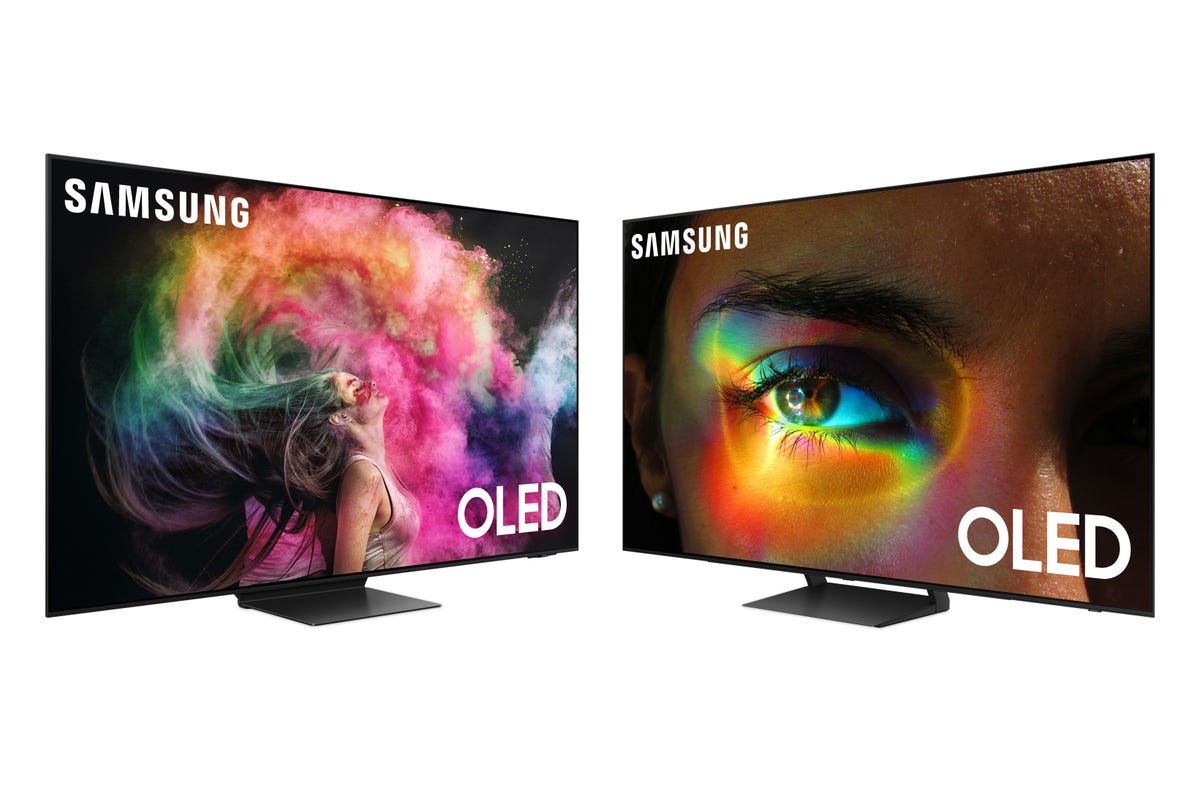
Pros:
- Impressive color
- Impressive brightness
Cons:
- Expensive (for now)
The latest version of OLED is what’s called QD-OLED, aka quantum dot OLED. Combining OLED with quantum dots has been in the pipeline practically since quantum dots entered the market. Like they do with LED LCDs, QDs help boost OLEDs’ brightness and color. They also make manufacturing a little easier, as each subpixel is the same color. Samsung Display manufactures all QD-OLED panels right now, and its design uses all blue OLED material, and that blue is converted to red or green light depending on the subpixel.
The main downside is cost. These are some of the most expensive displays on the market per screen inch. That will eventually come down as they become easier to manufacture. Also, while they theoretically are an improvement over other types of OLED screens, that difference might not be huge, if at all. WOLED and QD-OLED are both “A” students, both Ferraris, so for most people either will be great. It might even come down to the specific year or series as to which is best.
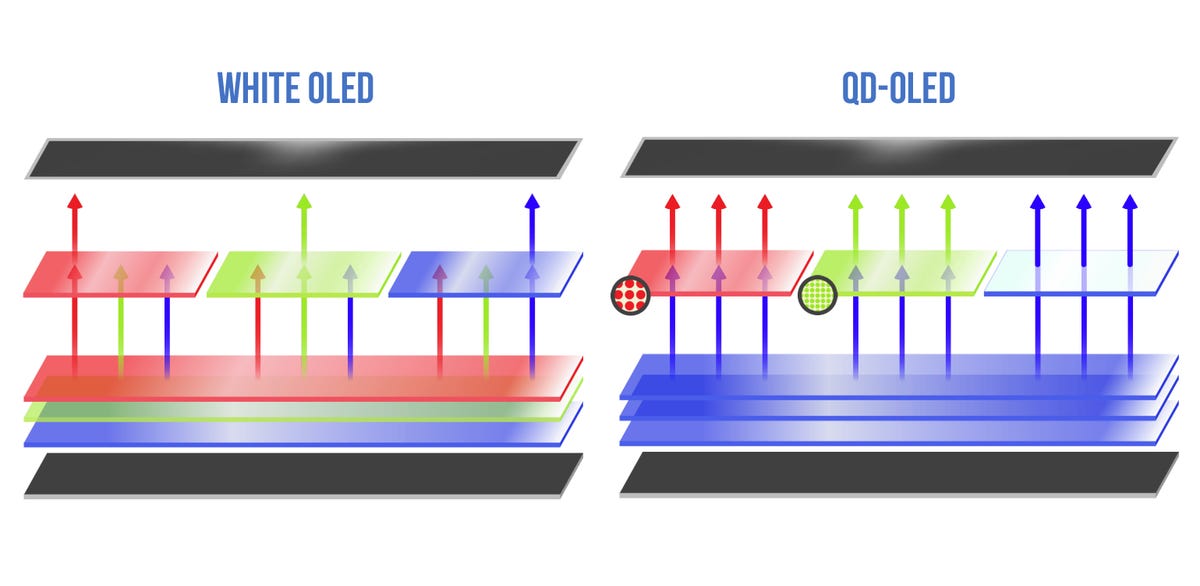
Right now you can find QD-OLED TVs sold by Samsung and Sony, along with computer monitors also from Samsung and from Alienware.
For more on QD-OLED, check out QD-OLED TV: Samsung, Sony Take on LG With Quantum Dot Special Sauce.
WOLED

Pros:
- More affordable
- Contrast and brightness
Cons:
- Potentially not quite as colorful as QD-OLED
LG deserves credit for making OLED TVs mainstream, and the way it did that was with its proprietary WOLED, or “white” OLED design. To create an image, you need red, green and blue. This lets the TV create pretty much any color needed. With most displays that means each pixel has three subpixels, one for each color. WOLED adds a fourth subpixel, white, to add brightness. Each subpixel is the same color, much like how QD-OLED works. In this case, instead of blue, each subpixel starts with white(ish) light. Early generations used blue and yellow OLED materials to create this white light. More recent models add in red and green to balance out the white spectrum. Above each non-white subpixel is a color filter to let through the wavelengths of the desired color.
While theoretically this method is less efficient than a design without color filters, LG has gotten very good at it. In fact, its current G3 is brighter than some QD-OLED models. It is also currently cheaper to manufacture, so you can get less expensive WOLED displays compared to QD-OLED.
While a video purist might be able to pick some metaphorical nits about the difference between WOLED and QD-OLED, it comes down to specific models as to which might look better.
Check out our Best TV list to see more about how they stack up.
RGB-OLED
Pros:
- Efficient to manufacture in small sizes
- Energy efficient
Cons:
- Difficult to scale up
The first OLED displays were a traditional design of OLED with RGB subpixels. These were marketed by Sony as a tiny desktop display, and later by Samsung as a small, curved TV. Neither were particularly successful. However, most of you reading this either have an OLED display within arm’s reach, or perhaps you’re reading these words on one.
Phone-size OLED screens are a mainstay of the mid- and high-end phone market. These are almost exclusively RGB-OLED. There are even a handful of laptops that use these kinds of OLED screens. For various reasons, it’s difficult to scale these designs up to TV-sized, but they work great as high-resolution, portable displays.
With LCD screens, the main energy drain is the backlight, which generally speaking has to be on at all times for you to see anything. With OLED, the only energy drain is through active pixels, and if the pixel is dim, it draws less power than if it’s bright. So in most situations an OLED screen draws less power than an LCD screen of the same size. If the screen brightness is at maximum, like you’re trying to see it in direct sunlight, it could draw more, but most of the time that’s not how they’re used.
It’s unlikely we’ll see TV-size RGB-OLED since LG has been extremely successful with its WOLED design and Samsung has invested literally billions into its QD-OLED factories, which use blue OLED material plus quantum dots.
Check out our picks for the best smartphone, which almost exclusively use OLED screens.
Micro-OLED
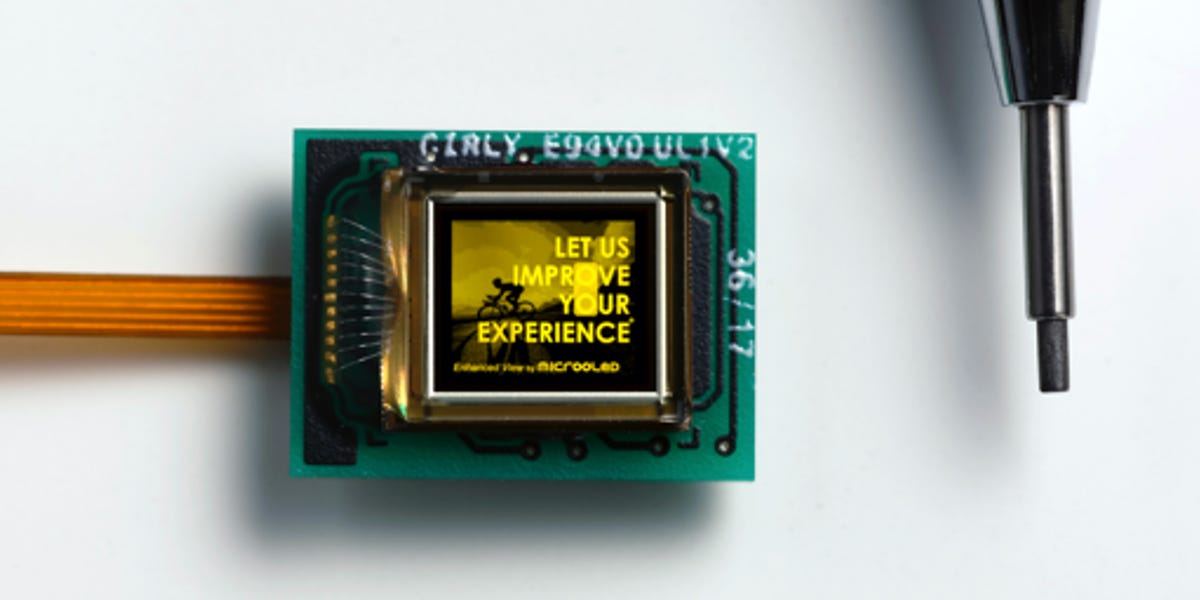
Pros:
- Micro!
- Ridiculous resolutions
Cons:
- Expensive
- Seriously, so expensive
While the other variants of OLED on this list are different primarily due to how they create color, Micro-OLED is different based on its size. I suppose the name probably gave that away. The most high-profile use of Micro-OLED is Apple’s Vision Pro AR/VR headset, though they’ve been used in camera viewfinders and other small displays for a while.
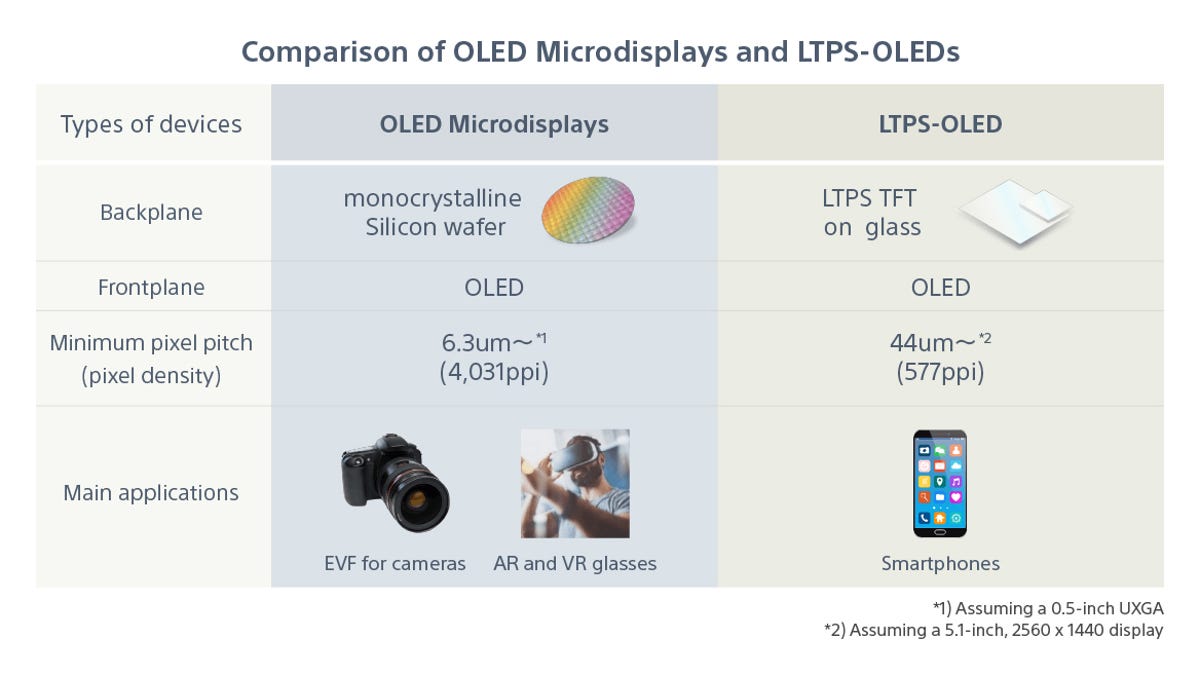
Another name for Micro-OLED is “OLED on Silicon”, which helps describe how it works. Essentially OLED is incorporated onto a silicon chip. These displays are not only tiny, but extremely high resolution. It’s possible to have the same resolution as a 4K TV on something the size of a postage stamp. While a TV might have 100 or so pixels per inch and a smartphone around 500, a Micro-OLED display has over 4,000.
What uses are there for a 1-inch display with Ultra HD resolution? Well, not many. AR and VR headsets are the main use right now, as well as the aforementioned camera viewfinders. Theoretically smart watches could use Micro-OLED, but right now I’m not sure there’s a market for a $3,000 4K smartwatch (though I’m sure Apple will find a way).
For more info about Micro-OLED, check out What Is Micro-OLED? Apple Vision Pro’s Display Explained.
Foldable and beyond
One of the biggest, futuristic uses of OLED is the ability to create foldable and rollable screens. LG has been showing off roll-up OLED screens for years, often at eye-watering prices. Samsung, Google and others are selling foldable smartphones. It’s hard to say if these will become more mainstream, but they’re not currently priced too outrageously, with some versions in the same range as high-end nonfoldable phones.
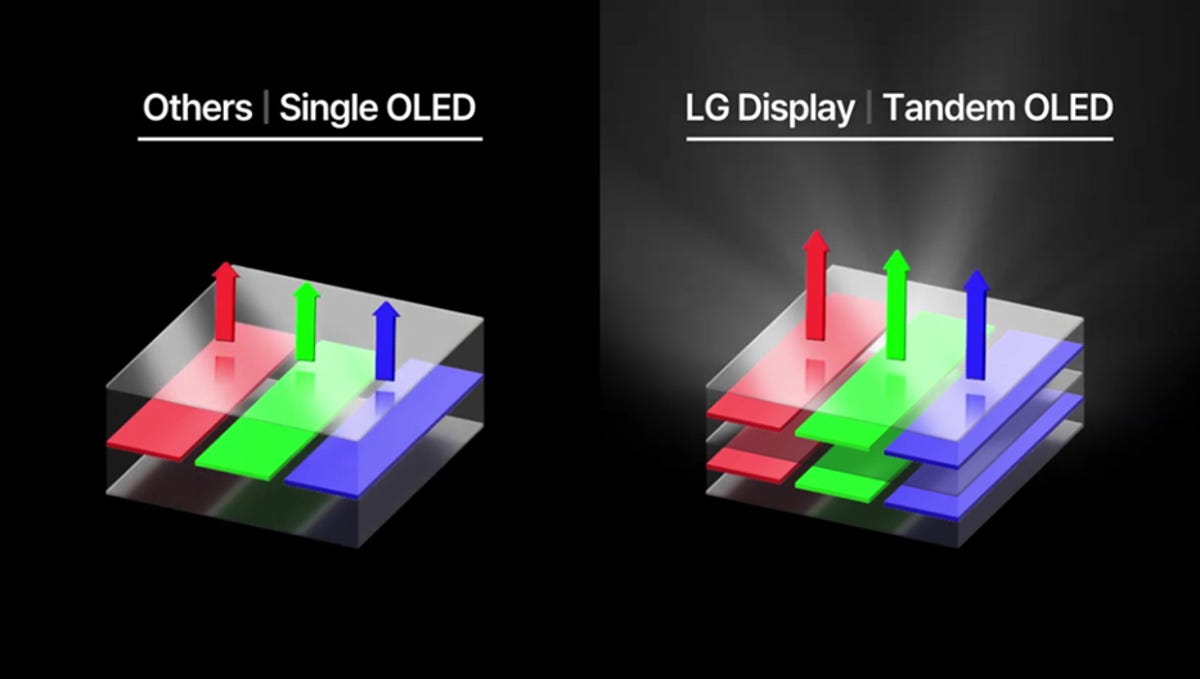
As you’d hope, the technology isn’t stagnating either. Multiple companies are working on a “two-stack tandem” OLED design that adds an additional light-emitting layer. It’s claimed this method will increase brightness and lifespan. It’s possible next year’s iPads will feature OLEDs with this design.
Samsung and LG might not be the only manufacturers of TV-size OLED panels going forward, as several Chinese companies have been showing off panels for several years at trade shows.
Lastly, OLED’s days at the top of the picture quality throne might be numbered. The very quantum dots that elevate its image might be in the process of staging a coup. Electroluminescent quantum dots (see What Is NanoLED? The Next Big Screen Tech Explained) let quantum dots shine on their own, no OLED materials required. I’ve seen a working prototype and visited one of the factories where they’re made. It’s still a ways off from being mainstream, but it’s coming.
Will OLED hang on like LCD has after nanoLED or some other TV tech arrives? Absolutely.
As well as covering TV and other display tech, Geoff does photo tours of cool museums and locations around the world, including nuclear submarines, massive aircraft carriers, medieval castles, epic 10,000-mile road trips, and more. Check out Tech Treks for all his tours and adventures.
He wrote a bestselling sci-fi novel about city-size submarines and a sequel. You can follow his adventures on Instagram and his YouTube channel.
